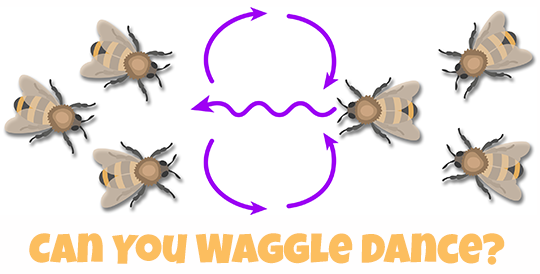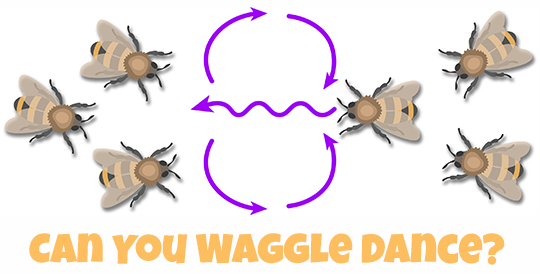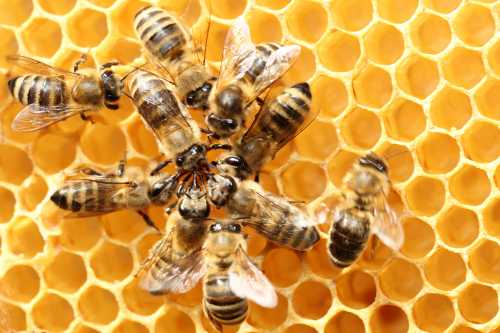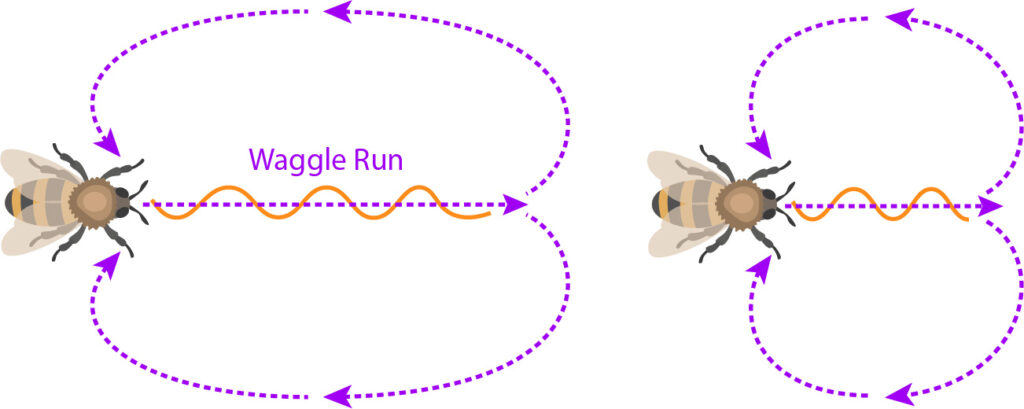
Have you ever wondered how bees communicate with each other? It’s truly fascinating to learn about the intricate language these small creatures use to convey messages and share information within their colonies. From waggle dances to odor cues, bees have developed unique ways to communicate vital information about food sources, danger, and even the location of their cozy hives. In this article, we will explore the incredible world of bee communication and delve into the various methods these buzzing insects employ to effectively convey messages among themselves. Get ready to uncover the secrets of their intriguing communication system!
Types of Bee Communication
Bees, as social insects, have developed sophisticated ways to communicate with each other. They use various signals and cues to convey important information within their colonies. These communication methods can be categorized into three main types: dance language, pheromones, and vibrations.
Dance Language
Dance language is a unique form of communication used by honeybees to share information about food sources and potential new nesting sites. It is a fascinating behavior that involves intricate movements and patterns performed by scout bees inside the hive.
Pheromones
Pheromones are chemical substances emitted by bees to transmit messages and elicit specific responses from other members of the colony. These chemical signals play a vital role in coordinating colony activities, such as foraging, mating, and defending their territory.
Vibrations
Vibrations, or vibrational communication, is another method bees use to communicate with each other. Through the generation of distinct vibratory signals, bees can convey important information about resources, danger, and even their overall health to members of their colony.
Dance Language
Dance language is a remarkable form of communication that is exclusive to honeybees. Discovered by the famous scientist Karl von Frisch, this unique behavior involves a systematic series of movements performed by scout bees to inform the rest of the colony about the location of a food source or a suitable nesting site.
Purpose of Dance Language
The primary purpose of dance language is to provide precise directions to other bees, guiding them to the location of a valuable resource. It helps the colony make efficient foraging decisions by sharing important information such as the distance, direction, and quality of the food source.
Types of Dances
Honeybees perform two main types of dances: the waggle dance and the round dance. These dances differ in complexity and are tailored to convey specific information to the other bees.

Pheromones
Pheromones are chemical substances secreted by bees to communicate with each other. These powerful chemical signals allow bees to convey messages, attract mates, mark territories, and coordinate various tasks within the colony.
Types of Pheromones
Bees produce different types of pheromones with specific functions. The three main types of pheromones used by bees are alarm pheromones, Nasonov pheromones, and queen mandibular pheromones.
Function of Pheromones
Pheromones play a crucial role in maintaining the social structure and organization of bee colonies. They help coordinate behaviors, such as foraging, defense, reproduction, and overall colony unity.
Vibrations
Bees also communicate through vibrations, which involve the generation of distinct vibratory signals. These signals can convey crucial information about the availability of food sources, the presence of predators or danger, and even the health or condition of the colony.
Use of Vibrations
Vibrational communication is particularly important for communication between bees in dark and enclosed spaces within the hive. By generating specific vibrations, bees can alert other colony members and provide important information about the surrounding environment.
Types of Vibrations
Bees use a variety of vibration signals to communicate different messages. Some common types of vibrational signals include the shaking dance, buzzing, and shaking or vibrating of the wings. Each of these vibrations carries a specific meaning and is interpreted by other bees accordingly.

The Waggle Dance
The waggle dance is a remarkable behavior performed by honeybees to share information about the location of a valuable food source or nesting site. It is a complex and precise dance that conveys important details to other bees, allowing them to find and exploit the resource.
Description of the Waggle Dance
The waggle dance involves a figure-eight pattern performed by a scout bee on the vertical surface of the honeycomb. The scout bee waggles its abdomen while moving in a straight line, then makes a half-circle turn, and returns to the starting point in a repeating loop.
Components of the Waggle Dance
The waggle dance contains essential components that convey specific information. The angle at which the dance is performed relative to the vertical comb indicates the direction of the resource in relation to the sun. The duration of the straight portion of the dance corresponds to the distance to the resource, with longer durations indicating greater distances. The intensity of the waggle run communicates the quality or abundance of the resource.
Round Dance and Sickle Dance
In addition to the waggle dance, honeybees also use the round dance and sickle dance to communicate information about nearby food sources. These dances are simpler than the waggle dance and provide bees with general directions to locate food close to the hive.
Description of the Round Dance
The round dance is a circular movement performed by a returning forager bee on the honeycomb surface. It lacks the precise directional information of the waggle dance but conveys that a food source is nearby. Other bees that observe the dance will venture out to explore the surrounding area until they find the source.
Description of the Sickle Dance
The sickle dance is a variation of the round dance. It is performed when the food source lies in a direction closer to the vertical orientation of the honeycomb. The sickle dance consists of a crescent-shaped or sickle-shaped movement, indicating that the resource is located in a specific direction within a shorter distance.

Pheromone Communication
Pheromones play a critical role in bee communication, allowing them to convey important messages within their colony. Different types of pheromones are released for distinct purposes and have specific effects on other bees.
Alarm Pheromones
Alarm pheromones are secreted by bees when they perceive a threat or danger. These pheromones serve as an alarm signal, alerting other bees to the presence of a potential attacker or disturbance.
Nasonov Pheromones
Nasonov pheromones are used by bees to mark specific locations, such as the entrance of their hive or a food source. They also function as orientation cues, helping bees return to their colony after foraging.
Queen Mandibular Pheromones
Queen mandibular pheromones are produced by the queen bee to maintain social harmony within the colony. These pheromones influence the behavior and reproductive capabilities of other bees, ensuring proper functioning of the hive.
Alarm Pheromones
When bees sense danger or perceive a threat to their colony, they release alarm pheromones as a warning signal to the rest of the bees. This chemical communication helps coordinate a defense response and ensure the safety of the hive.
Purpose of Alarm Pheromones
The main purpose of alarm pheromones is to communicate an imminent threat to the colony and trigger a coordinated defensive reaction. By releasing these pheromones, bees alert their nestmates and prepare them for immediate action.
Release of Alarm Pheromones
Bees release alarm pheromones through their stingers when they are threatened or attacked. The pheromones quickly spread within the colony, signaling danger and prompting other bees to join the defense. This rapid release and transmission of alarm pheromones help ensure a swift and effective response to potential threats.

Nasonov Pheromones
Nasonov pheromones play an essential role in guiding bees back to their hive and marking specific locations. They are used by forager bees to provide orientation cues and help maintain the unity and organization of the colony.
Purpose of Nasonov Pheromones
The main purpose of Nasonov pheromones is to mark specific locations, such as the entrance of the hive or a food source. They serve as a signal to both returning foragers and lost bees, ensuring they can find their way back home.
Release of Nasonov Pheromones
Bees release Nasonov pheromones from specialized glands located at the tip of their abdomen. By raising their abdomens and fanning their wings, bees disperse these pheromones into the air. The scent signals act as homing beacons, helping bees navigate back to the hive or locate important resources.
Queen Mandibular Pheromones
Queen mandibular pheromones are produced by the queen bee to regulate the behavior and reproductive capabilities of other bees in the colony. They are crucial in maintaining social harmony and ensuring the efficient functioning of the hive.
Role of Queen Mandibular Pheromones
Queen mandibular pheromones have multiple roles within the colony. They function as sexual attractants, inhibiting the development of worker bee ovaries and ensuring the female workers focus on tasks other than reproduction. These pheromones also help maintain the unity and cooperation among colony members.
Effects on Other Bees
The presence of queen mandibular pheromones affects the behavior of worker bees. It influences their productivity, communication, and overall social cohesion. The absence or reduction of these pheromones can lead to queenlessness, prompting worker bees to initiate the process of rearing a new queen for the colony.
In conclusion, bees have a complex and sophisticated communication system that involves dance language, pheromones, and vibrations. Through these different modes of communication, bees effectively relay information about food sources, suitable nesting sites, danger, and other crucial aspects of colony life. Understanding the intricacies of bee communication helps us appreciate the remarkable abilities of these social insects and their commitment to the collective well-being of their colonies.
